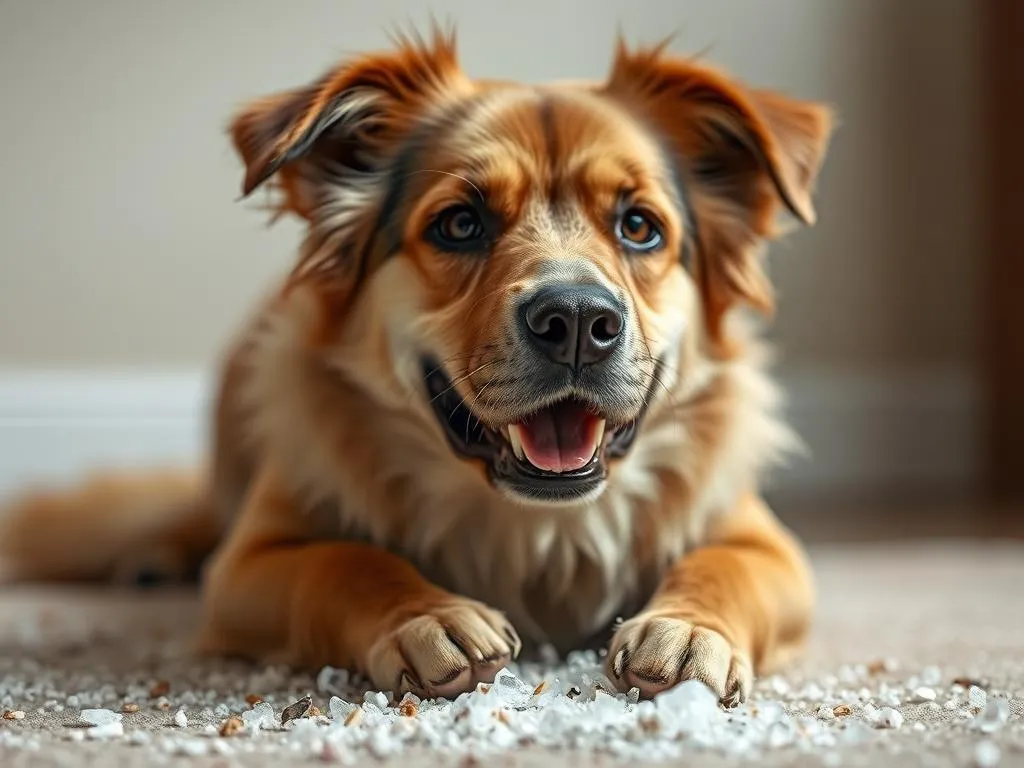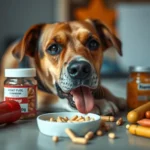
Introduction
As a dog owner, it’s crucial to be vigilant about your pet’s health and well-being. Dogs are naturally curious creatures, often exploring their environment with their mouths. This behavior can sometimes lead to unexpected and concerning situations. One such issue is when dogs consume cat litter crystals, a scenario that can raise alarm for many pet owners.
Cat litter, particularly those containing crystals, is not designed for canine consumption and can pose serious health risks. In this article, we will explore the nature of cat litter crystals, the reasons dogs may ingest them, the potential dangers involved, and the steps you should take if your furry friend finds themselves in this predicament.
Understanding Cat Litter Crystals
What Are Cat Litter Crystals?
Cat litter crystals come in various forms, primarily including silica gel and clay-based options. Silica gel crystals are small, round beads that absorb moisture and control odor, while clay-based litters, made from materials like sodium bentonite, clump together when wet. Common brands of cat litter that utilize these materials include Tidy Cats, Arm & Hammer, and PetSafe.
The ingredients in these litters can vary widely, with some containing fragrances or additives designed to enhance odor control. It’s important to familiarize yourself with the specific type of litter used in your home, as the ingredients can significantly impact your dog’s health if ingested.
Why Dogs Might Eat Cat Litter Crystals
Dogs are inherently curious and often engage in scavenging behavior. This curiosity can lead them to explore items that are not safe for consumption, such as cat litter crystals. The attraction to these crystals can stem from various factors:
-
Odor: Cat litter often has strong smells that can pique a dog’s interest, especially if it has absorbed urine or other scents.
-
Texture: The unique texture of crystals may entice dogs to chew or ingest them, mistaking them for food.
Risks Associated with Ingesting Cat Litter Crystals
Ingesting cat litter crystals poses several risks to dogs, which can range from mild to severe. Some potential health issues include:
-
Chemical Toxicity: Many cat litter brands contain chemicals that can be harmful to dogs. Ingesting these substances can lead to toxic reactions, depending on the ingredients.
-
Physical Blockages: Depending on the amount consumed, cat litter crystals can cause blockages in the digestive tract, leading to significant discomfort and potentially requiring surgical intervention.
-
Symptoms to Watch For: After ingesting cat litter crystals, watch for signs such as vomiting, diarrhea, lethargy, or loss of appetite. If any of these symptoms occur, immediate veterinary attention is necessary.
Immediate Actions to Take
Assessing the Situation
If you discover that your dog has eaten cat litter crystals, the first step is to assess the situation. Determine how much was ingested and identify the specific type of litter. This information will be vital when consulting a veterinarian.
Contacting a Veterinarian
It’s important to know when to call the vet. If your dog exhibits any concerning symptoms or if you know they have consumed a significant amount of litter, seek veterinary advice immediately. Be prepared to provide the following information:
- Dog’s size and breed
- Age and weight
- Type and amount of litter consumed
- Any symptoms observed
For less urgent cases, it’s still wise to consult your veterinarian to discuss the situation and get professional guidance.
Monitoring Your Dog
While you monitor your dog, look for signs of distress. These may include:
- Vomiting or retching
- Lethargy or weakness
- Loss of appetite
- Abdominal pain or bloating
If you notice any of these symptoms, it’s essential to seek veterinary care. Keeping your dog comfortable during this time, providing a quiet space, and ensuring they have access to water can help ease their discomfort.
Treatment Options
Veterinary Interventions
Upon visiting the veterinarian, there are several treatment options they may consider. Some common interventions include:
-
Induction of Vomiting: If ingestion occurred recently, the vet may induce vomiting to prevent further absorption of the litter.
-
Activated Charcoal: To help absorb any toxins in the digestive system, activated charcoal may be administered.
-
Fluids: In cases of dehydration or if the dog is unable to keep food or water down, intravenous fluids may be necessary.
Follow-up care is crucial, and your vet may recommend monitoring your dog’s recovery closely, especially if they exhibited severe symptoms.
Home Care Tips
If your veterinarian advises home care, there are several strategies to help your dog recover:
-
Hydration: Ensure your dog has access to fresh water at all times.
-
Bland Diet: If your dog is willing to eat, offer a bland diet consisting of boiled chicken and rice to soothe their stomach.
-
Rest: Allow your dog plenty of time to rest and recuperate.
Long-term Health Monitoring
After an incident involving cat litter crystals, it’s essential to schedule follow-up vet visits to monitor your dog’s health. Pay close attention to their digestion and overall behavior, as any changes could indicate underlying issues.
Prevention Strategies
Dog-Proofing Your Home
Prevention is the best approach to avoid the risks associated with dogs eating cat litter crystals. Here are some effective strategies:
-
Keep Cat Litter Out of Reach: Place litter boxes in areas inaccessible to your dog. Consider using baby gates or keeping doors closed to limit access.
-
Choose Safer Alternatives: Some cat litter options are more dog-friendly, such as biodegradable litters made from corn or wheat. Research these alternatives to find a safer option.
Training Your Dog
Training can play a significant role in preventing your dog from scavenging unsafe items. Consider implementing the following strategies:
-
Basic Commands: Teach commands like “leave it” or “no” to discourage your dog from approaching the litter box.
-
Reinforce Positive Behavior: Reward your dog for ignoring the litter box or other potentially harmful items. This can help reinforce good behavior.
Regular Veterinary Check-ups
Routine veterinary visits are essential for maintaining your dog’s overall health. Regular check-ups allow for early detection of health issues and provide opportunities for vaccinations and health screenings. Keeping your dog healthy and well-monitored can help minimize the impact of any accidental ingestion of harmful substances.
Frequently Asked Questions (FAQs)
Can cat litter crystals cause long-term health issues?
The potential for long-term health issues largely depends on the type of litter consumed. Some litters may contain harmful chemicals or toxins that can lead to lasting health effects. It’s vital to consult your veterinarian for a thorough evaluation if your dog has ingested cat litter crystals.
What should I do if my dog shows no symptoms?
Even if your dog appears to be fine, it’s important to stay vigilant. Monitor their behavior and health closely for any changes in appetite, energy levels, or digestive habits. Regular check-ins with your veterinarian can provide peace of mind and ensure your dog stays healthy.
Are certain breeds more prone to eating cat litter?
While all dogs can exhibit scavenging behavior, some breeds may be more prone to this tendency due to their natural instincts. Breeds known for their exploratory and curious nature, such as Beagles or Labradors, may be more likely to investigate and potentially consume cat litter. Training and supervision are essential for all breeds to minimize risks.
Conclusion
Understanding the potential hazards of cat litter crystals is essential for every dog owner. By recognizing the signs of ingestion, knowing how to respond, and implementing preventative measures, you can protect your furry friend from harm. Always stay informed about your pet’s behavior and health, as proactive care is the best way to ensure a long, happy life together.
By being aware of the risks associated with common household items like cat litter, you can make informed decisions to keep your dog safe and healthy. Remember that your veterinarian is your best resource when it comes to your pet’s health, and don’t hesitate to reach out for guidance if you’re ever unsure about your dog’s well-being.









